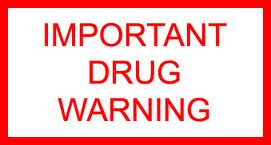New Jersey: No Liability for Other Parties’ Asbestos Products
By Don Willenburg, Oakland on April 28, 2014
New Jersey has joined the list of jurisdictions that hold a defendant is not liable for asbestos in replacement parts supplied by others, regardless of whether there was asbestos in the same part as originally supplied.
Hughes v. A.W. Chesterton Co. is a generally good result for asbestos defendants. Notably, it did not get to the result the same way that other cases (e.g., California, Washington, and the asbestos MDL) did.
Hughes held that there was a duty to warn, but found no liability as a matter of causation. Many other cases coming to the same result as Hughes held that there is no duty to warn. (For example, California’s O’Neil, Washington’s Braaten and Simonetta, the Sixth Circuit’s Lindstrom, the MDL’s Prange, etc.)
Hughes imposed a duty to warn on the grounds that it was reasonably foreseeable at the time the Goulds pumps were sold that original gaskets and packing would be regularly replaced with gaskets and packing that contained asbestos. “Since the risk of exposure continued and was perhaps increased by the replacement process, a warning given at the time of the initial sale would ensure that this information was available to be considered in subsequent decisions regarding the choice of replacement parts and any additional safeguards for workers who made the replacements. We therefore conclude that it would be reasonable, practical, and feasible to impose a duty to warn upon Goulds under the facts here.”
“We do not agree that plaintiffs may prove causation by showing exposure to a product without also showing exposure to an injury-producing element in the product that was manufactured or sold by defendant.” The court rejected plaintiffs’ argument that causation may be proved by mere likelihood that defendant’s equipment would be used with asbestos-containing replacement parts, requiring instead proof that such parts were “manufactured or sold by the defendant.”
“California law,” as O’Neil says in contrast, “does not impose a duty to warn about dangers arising entirely from another manufacturer’s product, even if it is foreseeable that the products will be used together. Were it otherwise, manufacturers of the saws used to cut insulation would become the next targets of asbestos lawsuits.”
It is unclear whether the Hughes/New Jersey/causation approach will lead to more consistently positive results for defendants than the O’Neil/California/no duty approach. For example, California courts have since split on whether cases against various defendants, including some that never made any asbestos-containing products but only products that were used with such products, fall within O’Neil exceptions. Such exceptions to O’Neil may be irrelevant to a causation analysis under Hughes. Another potential difference is that it ought generally to be easier to win summary judgment on duty, a legal issue, than on causation, which will involve facts. On the other hand, it’s still all about one question: “was it the defendant’s product that contained the asbestos?”

 Often the physician, a trained clinician, will testify that she was familiar with the risks in question and did not need to be provided a warning. Alternatively, the physician may testify that a stronger warning would not have influenced her decision to prescribe the drug and that she still prescribes the drug, although the problem with this, is that some drugs are known for causing addiction sometimes, so the use of an
Often the physician, a trained clinician, will testify that she was familiar with the risks in question and did not need to be provided a warning. Alternatively, the physician may testify that a stronger warning would not have influenced her decision to prescribe the drug and that she still prescribes the drug, although the problem with this, is that some drugs are known for causing addiction sometimes, so the use of an  to every warning claim – the defect (whatever is allegedly wrong with the warning) has to cause the injury. If the prescribing physician never even read the purportedly inadequate warning, none of those inadequacies could have affected his/her treatment of the patient.”
to every warning claim – the defect (whatever is allegedly wrong with the warning) has to cause the injury. If the prescribing physician never even read the purportedly inadequate warning, none of those inadequacies could have affected his/her treatment of the patient.” In many jurisdictions, a product liability plaintiff is not permitted to testify concerning what he or she would have done had there been an adequate warning on a product; such testimony is considered both self-serving and speculative. In the absence of such testimony, some states have adopted the Heeding Presumption.
In many jurisdictions, a product liability plaintiff is not permitted to testify concerning what he or she would have done had there been an adequate warning on a product; such testimony is considered both self-serving and speculative. In the absence of such testimony, some states have adopted the Heeding Presumption. Motors (“Hassel”), alleging that Sean’s mother, Debra, was exposed to gasoline fumes in the family’s BMW during her pregancy, which resulted in Sean being born with birth defects.
Motors (“Hassel”), alleging that Sean’s mother, Debra, was exposed to gasoline fumes in the family’s BMW during her pregancy, which resulted in Sean being born with birth defects.  Rutherford “increased risk” instruction applicable in asbestos cases because the ability of a product to cause the type of harm suffered by the plaintiff was hotly contested.
Rutherford “increased risk” instruction applicable in asbestos cases because the ability of a product to cause the type of harm suffered by the plaintiff was hotly contested.